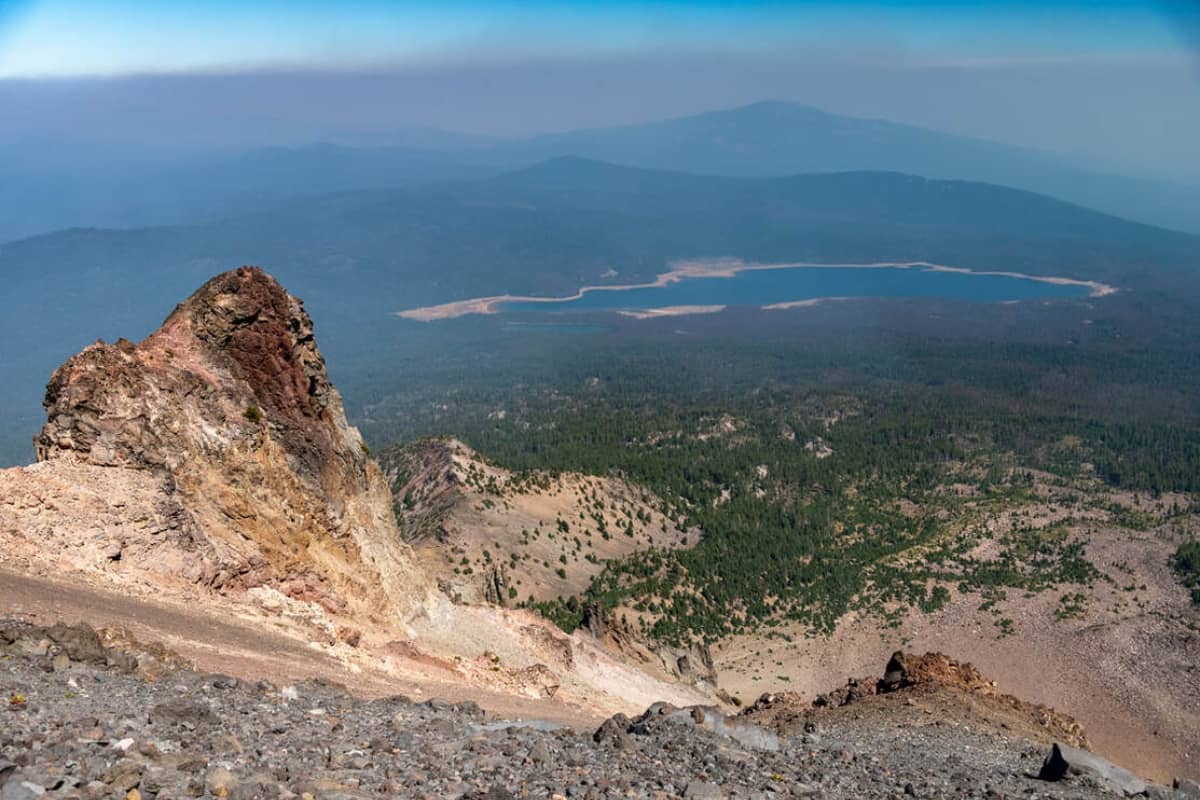Mount McLoughlin, a prominent peak in southern Oregon, stands as a captivating destination for hikers, offering sweeping views of the surrounding wilderness. While it promises adventure and stunning scenery, the Mount McLoughlin Trail also harbors several hidden dangers. Awareness of these potential risks is crucial for a safe and enjoyable experience on the trail.
Elevation and Altitude Sickness
The Mount McLoughlin Trail involves an elevation gain of about 4,000 feet, reaching a summit height of approximately 9,495 feet. For those unaccustomed to high elevations, the hike can quickly become physically challenging, leading to altitude-related issues like dizziness, shortness of breath, or even altitude sickness. The steep ascent exacerbates these symptoms, and hikers should pay close attention to how their bodies respond to the increased elevation. Adequate acclimatization before the hike and maintaining a steady pace can help mitigate the effects of high altitude.
Harsh and Unpredictable Weather
One of the most significant dangers of hiking Mount McLoughlin is the unpredictable weather near the summit. Although conditions at the base are often mild, the weather at the summit can change rapidly, transforming from clear skies to severe storms in a matter of minutes. Cold winds, driving rain, lightning, and even snowstorms are common, even during the summer months. Unprepared hikers can find themselves caught in hazardous weather conditions, increasing the risk of hypothermia. It is crucial to pack proper gear, including waterproof clothing, layers to combat the cold, and knowledge of weather patterns in the region.
Difficulty in Navigation
The Mount McLoughlin Trail can be tricky to follow, particularly during the descent. The route above the timberline is often less defined, marked only by scattered rock cairns. After the trail leaves the Pacific Crest Trail, it ascends through a rugged, boulder-strewn forest, and the path becomes progressively more difficult to discern. Hikers are encouraged to regularly check their position relative to landmarks on the way up to help them navigate during the descent. Unfortunately, each year, numerous hikers lose the trail on their way back down, leading to disorientation and, in some cases, overnight rescues.
One of the main issues arises when hikers mistakenly descend the sandy cinder slope on the south side of the mountain, which leads them far away from the main trail. The further one descends this slope, the more difficult it becomes to rejoin the correct route, resulting in a hazardous off-trail scramble back to the timberline. Carrying a map, compass, or GPS device, and paying close attention to trail markers, can greatly reduce the chances of becoming lost.
Loose Rocks and Scree Fields
The final stretch of the Mount McLoughlin Trail, particularly the last mile before the summit, poses a significant challenge due to loose rocks and scree fields. The terrain is composed of volcanic rubble and blocky lava, which can make footing treacherous. Slipping on the unstable surface is a constant danger, especially for those not accustomed to such terrain. Hikers are advised to take their time and use trekking poles for added stability.
Descending through these scree fields can be even more perilous, as the risk of falling increases on the loose, uneven ground. Proper hiking boots with good ankle support are essential to avoid injury, and extreme caution should be exercised while navigating this section.
Dehydration and Lack of Water Sources
Another danger that hikers face on the Mount McLoughlin Trail is the lack of water sources. There is no potable water along the trail, making it essential to carry enough water for the entire hike. Dehydration can quickly become a serious issue, particularly on hot days when the sun beats down relentlessly on the exposed sections of the trail above the timberline. Hikers should bring plenty of water and electrolytes to stay hydrated throughout the hike.
The absence of water sources means there are no opportunities to refill once on the trail, so it’s essential to overestimate how much water will be needed. Starting the hike early in the day, when temperatures are cooler, can also help reduce water consumption.
Sudden Storms and Lightning Strikes
Mount McLoughlin’s summit is an exposed ridge, making it a prime target for lightning strikes during storms. Lightning is a serious hazard in this region, particularly during summer thunderstorms. Hikers caught on the summit during a storm are highly vulnerable, as there are few places to take shelter. If storms are predicted, it is best to delay the hike or turn back before reaching the exposed summit.
Additionally, weather conditions can change rapidly, especially at higher elevations. It’s not uncommon for clear skies to turn into dark, stormy weather with little warning. Checking weather forecasts before embarking on the hike and being prepared to adjust plans accordingly can help hikers avoid being caught in dangerous storms.
Steep Slopes and Fall Risks
The trail’s steepness, especially near the summit, poses a risk for falls. While the ascent is non-technical, the steep slopes, combined with loose rocks and gravel, increase the likelihood of slipping. This danger is magnified during the descent, as tired hikers often let their guard down. Paying attention to footing and maintaining a slow, steady pace can help prevent accidents. For those with limited experience on steep trails, taking additional safety precautions, such as using hiking poles, can make a significant difference.
Conclusion
Mount McLoughlin offers a challenging yet rewarding hiking experience, but the hidden dangers along the trail should not be underestimated. Rapid weather changes, difficult navigation, loose scree, dehydration risks, and potential falls all combine to create a hike that requires preparation, awareness, and respect for the mountain. By packing the right gear, staying aware of weather conditions, and carefully following the trail, hikers can safely enjoy the beauty and adventure that Mount McLoughlin has to offer.






